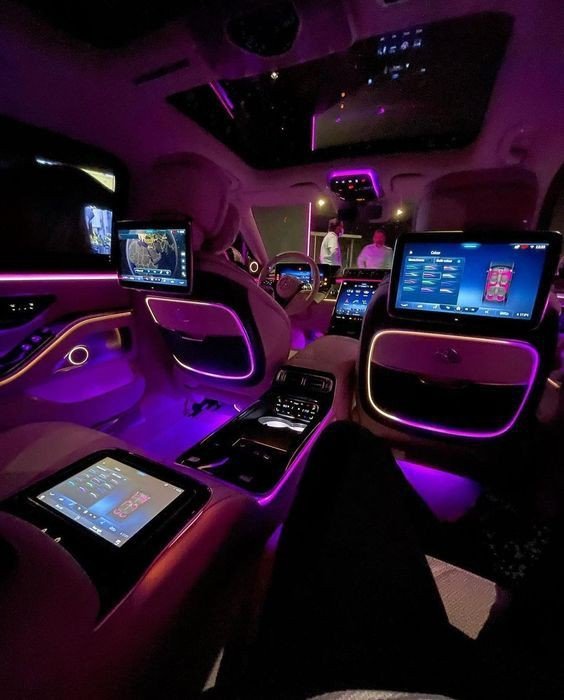
In-car voice assistants have transformed the driving experience, bringing convenience, safety, and a touch of futuristic technology to the daily commute. From the early days of simple voice commands to today’s advanced artificial intelligence (AI)-powered systems, in-car voice assistants have evolved significantly. This article traces the evolution of in-car voice assistants, exploring their technological advancements, benefits, challenges, and future prospects.
The Early Days of In-Car Voice Assistants
Initial Concepts and Developments
The concept of voice control in vehicles dates back to the 1980s when automakers began experimenting with ways to reduce driver distraction. Early systems were rudimentary, offering limited voice commands for basic functions such as controlling the radio or climate settings. These systems relied on simple voice recognition algorithms that required users to speak clearly and follow specific commands.
First Generation Systems
Ford’s “Rescue 911”: In 1993, Ford introduced one of the first voice-activated systems called “Rescue 911.” This system allowed drivers to call for emergency assistance using voice commands. However, it was limited in functionality and faced challenges with accuracy and user adoption.
Mercedes-Benz Linguatronic: In 1996, Mercedes-Benz launched its “Linguatronic” system, which allowed drivers to control the car’s phone and audio system using voice commands. While more advanced than previous attempts, it still struggled with speech recognition accuracy and required drivers to learn specific command structures.
The Rise of More Advanced Systems
The 2000s: Integration with Mobile Devices
The 2000s saw significant advancements in voice recognition technology, driven by improvements in mobile devices and internet connectivity. Automakers began integrating voice assistants with smartphones, allowing for more seamless and intuitive interactions.
Ford SYNC: Launched in 2007, Ford SYNC was a groundbreaking in-car communication and entertainment system developed in collaboration with Microsoft. It allowed drivers to make hands-free phone calls, control music playback, and access various applications using voice commands. SYNC’s ability to integrate with mobile devices and provide real-time traffic updates set a new standard for in-car voice assistants.
The Introduction of Natural Language Processing (NLP)
Natural Language Processing (NLP) marked a significant milestone in the evolution of in-car voice assistants. NLP enabled systems to understand and interpret more complex and natural speech patterns, reducing the need for specific command structures.
Nuance Dragon Drive: In 2012, Nuance Communications introduced Dragon Drive, an in-car voice assistant that utilized NLP to provide a more conversational user experience. Drivers could ask questions, set destinations, and control various vehicle functions using natural language. Dragon Drive’s ability to understand context and provide relevant responses made it a significant leap forward in voice assistant technology.
The Integration of AI and Machine Learning
The Mid-2010s: AI-Powered Voice Assistants
The mid-2010s saw the integration of artificial intelligence (AI) and machine learning into in-car voice assistants, greatly enhancing their capabilities. These technologies enabled voice assistants to learn from user interactions, improve accuracy over time, and provide personalized experiences.
Apple CarPlay and Google Android Auto: Apple and Google introduced CarPlay and Android Auto, respectively, which brought the power of their AI-driven voice assistants (Siri and Google Assistant) to the car. These platforms allowed drivers to access their smartphone functions, such as navigation, messaging, and music, through the car’s infotainment system using voice commands. The seamless integration of these AI-powered assistants significantly improved the in-car voice assistant experience.
Enhanced Functionality and Integration
AI-powered voice assistants offered enhanced functionality and deeper integration with the vehicle’s systems, providing a more comprehensive and connected experience.
- BMW Intelligent Personal Assistant: In 2018, BMW introduced its Intelligent Personal Assistant, an AI-powered voice assistant that could control various car functions, provide navigation assistance, and even engage in casual conversation. The system could learn the driver’s preferences and habits, offering personalized suggestions and reminders.
- Mercedes-Benz MBUX: Mercedes-Benz’s MBUX (Mercedes-Benz User Experience) system, launched in 2018, featured a highly advanced AI-powered voice assistant. It could understand complex commands, provide detailed information about the vehicle, and integrate with smart home devices. MBUX set a new benchmark for in-car voice assistants with its intuitive interface and advanced capabilities.
- The Modern Era: Connectivity and Ecosystem Integration
- The Late 2010s and Beyond: Connected Ecosystems
- The late 2010s and early 2020s have seen the emergence of connected ecosystems, where in-car voice assistants are part of a broader network of interconnected devices and services. This connectivity enables voice assistants to provide a seamless experience across different environments, from the home to the car and beyond.
Amazon Alexa Auto: Amazon extended its popular Alexa voice assistant to the automotive world with Alexa Auto. This integration allows drivers to control smart home devices, access streaming services, and perform various tasks using voice commands. Alexa Auto’s ability to connect with other Alexa-enabled devices creates a unified and convenient experience for users.
Google Assistant Driving Mode: Google Assistant’s Driving Mode, introduced in 2019, offers a simplified interface and voice-activated controls for navigation, communication, and entertainment. The integration with Google’s ecosystem allows for a seamless transition between different devices and environments.
Advanced Features and Capabilities
Modern in-car voice assistants come with a range of advanced features and capabilities that enhance the driving experience and improve safety.
- Contextual Awareness: Advanced voice assistants can understand the context of commands and provide more relevant responses. For example, if a driver asks for nearby restaurants, the assistant can suggest options based on the current location and time of day.
- Multimodal Interaction: In-car voice assistants now support multimodal interaction, combining voice commands with touchscreens, gesture controls, and physical buttons. This flexibility allows drivers to interact with the system in the most convenient way possible.
- Voice Biometrics: Some systems incorporate voice biometrics to identify individual users and provide personalized experiences. This technology enhances security and ensures that the assistant can offer tailored recommendations and information.
Benefits of In-Car Voice Assistants
Enhanced Safety
One of the primary benefits of in-car voice assistants is enhanced safety. By allowing drivers to control various functions using voice commands, these systems help reduce the need to take hands off the wheel and eyes off the road.
- Hands-Free Communication: Voice assistants enable hands-free phone calls and messaging, reducing distractions and allowing drivers to stay focused on the road.
- Voice-Activated Navigation: Drivers can set destinations, get directions, and search for points of interest using voice commands, minimizing the need to interact with the touchscreen.
Improved Convenience
In-car voice assistants offer a high level of convenience, making it easier for drivers to access information, entertainment, and services while on the go.
- Access to Information: Drivers can ask for weather updates, traffic conditions, and news, all without taking their hands off the wheel.
- Entertainment Control: Voice assistants allow drivers to control music playback, select radio stations, and access streaming services using simple voice commands.
- Smart Home Integration: Integration with smart home systems enables drivers to control home devices, such as adjusting the thermostat or turning on lights, from their car.
Personalized Experiences
Modern in-car voice assistants can learn from user interactions and preferences, providing personalized experiences that enhance comfort and satisfaction.
- Customizable Settings: Voice assistants can adjust climate control, seat positions, and other settings based on individual preferences.
- Personalized Recommendations: By analyzing driving patterns and habits, voice assistants can offer personalized recommendations for routes, dining options, and more.
Challenges and Limitations
Speech Recognition Accuracy
Despite significant advancements, speech recognition accuracy remains a challenge for in-car voice assistants. Factors such as background noise, accents, and speech variations can affect the system’s ability to accurately understand commands.
Privacy and Security Concerns
The use of in-car voice assistants raises privacy and security concerns, particularly regarding the collection and use of voice data.
- Data Collection: Voice assistants collect and process voice data to improve accuracy and provide personalized experiences. Users may be concerned about how this data is stored and used.
- Security Risks: Vulnerabilities in voice assistant systems could potentially be exploited by hackers, posing risks to both personal data and vehicle control.
Integration with Older Vehicles
Integrating advanced voice assistant systems with older vehicles can be challenging, as these vehicles may lack the necessary hardware and connectivity features. Aftermarket solutions are available but may not offer the same level of integration and functionality as factory-installed systems.
Future Prospects of In-Car Voice Assistants
Advancements in AI and Machine Learning
The future of in-car voice assistants will be shaped by continued advancements in AI and machine learning. These technologies will enable voice assistants to become even more accurate, intuitive, and capable of understanding complex commands and contexts.
Enhanced Connectivity
As vehicles become more connected, in-car voice assistants will play a central role in integrating various systems and services. Enhanced connectivity will enable voice assistants to provide more comprehensive and seamless experiences, from navigation and entertainment to smart home control.
Autonomous Vehicles
The development of autonomous vehicles will further drive the evolution of in-car voice assistants. In fully autonomous vehicles, voice assistants will become the primary interface for passengers to interact with the car, control various functions, and access services.
Multilingual and Multimodal Capabilities
Future in-car voice assistants will offer improved multilingual capabilities, allowing users to interact in their preferred language. Additionally, multimodal interaction will be enhanced, combining voice, touch, gesture, and even facial recognition for a more intuitive and personalized experience.
Integration with Augmented Reality (AR)
Integration with augmented reality (AR) technologies will enable in-car voice assistants to provide more immersive and informative experiences. For example, AR overlays on the windshield could display navigation instructions, points of interest, and other relevant information in response to voice commands.
The evolution of in-car voice assistants has been marked by significant technological advancements and improvements in user experience. From the early days of basic voice commands to today’s AI-powered, connected systems, in-car voice assistants have transformed the driving experience by enhancing safety, convenience, and personalization.
As technology continues to advance, in-car voice assistants will become even more capable, accurate, and integrated with various systems and services. The future of in-car voice assistants holds exciting possibilities, from fully autonomous vehicles to augmented reality interfaces, promising to make driving safer, more enjoyable, and more connected than ever before.
By understanding the evolution and potential of in-car voice assistants, drivers can better appreciate the benefits these systems offer and look forward to the continued innovations that will shape the future of automotive technology.
ALSO READ: Tata Tiago iCNG AMT: A Comprehensive Review







